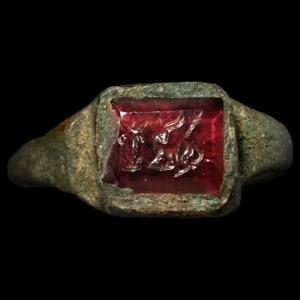Home > Auctions > 3 - 8 September 2024
Ancient Art, Antiquities, Natural History & Coins
Auction Highlights:
From Egypt.
Ex Mineral Imports, London, UK.
Gregory, Bottley & Lloyd (Gregory's).
Mons Porphyrites (today Jabal Abu Dukhkhan) is the mountainous site of a group of ancient quarries in the Red Sea Hills of the inhospitable eastern desert in Egypt, a five day trip from the Nile during Roman times. They were discovered by Caius Cominus Leugas in 18 A.D., and during the Roman Empire the mines officially belonged to the emperor and were the only known source of the Imperial Porphyry, Mons Porphyrites. This dark purple stone was associated with royalty and used for prestigious sculpture and architecture. The location of the mines was lost some time in the 5th century, and rediscovered in the early 19th century. Excavations in the area have revealed the well-preserved quarries and the dwelling places of the quarry men, and also thousands of ostraca have been discovered containing messages that provide details of how the quarrying took place, and of how the highly skilled quarrymen ordered their food.
From the collection of the famous author, writer and speaker, Gordon Bailey, Essex, UK; formed since 1968.
Cf. Bailey, G., Detector Finds 6, fig.C11.7, for a similar belt propeller.
Bailey, G., Detector Finds 7, Witham, 2011, pp.67 and 70, fig.1; Detector Finds 6, pp.41,54, for all items except the belt propeller.
In Britain like in all of the West, all the elements intended for the embellishment of belts and harnesses also evolved towards new forms, the geometry of which bears witness to strong Germanic influences. Beside the typical propeller stiffener belts (Richborough), probably of Danubian origin, we have less ornate wide-belt types, represented by the Winchester example. Belt-plaques of triangular shape, often gilded, beast-shaped at the extremity, were excavated in the south of Britain (Cirencester). Rigid belt-plates with the buckle shaped like a dolphin came from Richborough, Wye and Sleaford (class 3, type B, Sommer), Tripontium, Mucking, Wycombe, Alwalton (type I-B, Hawkes, also in Richborough) and type Mainz, Savgar, Totanés (Colchester, often with associated propeller stiffeners). Type Hawkes I-A and I-B present similarities with the Simancas typologies, found in Lankhills. The type Tirig is attested at Lydney Park, the Böhme A in Richborough. Strap ends are usually heart-shaped or amphora-shaped (Richborough). These belt fittings were characteristic of the Roman army in Britain at the beginning of the 5th century.
From an old UK collection.
From the private collection of Alf Baxendale (1941-2016) part 2, keen Egyptologist, member of the Egyptology Society, trustee of the Amarna Trust; thence by descent.
Accompanied by a copy of his obituary published in Horizon, The Amarna Project and Amarna Trust newsletter, Issue 18, 2017, p.21, by Barry John Kemp, CBE, FBA, Professor Emeritus of Egyptology at the University of Cambridge and directing excavations at Amarna in Egypt.
From the collection of the famous author, writer and speaker, Gordon Bailey, Essex, UK; formed since 1968.
Bailey, G., Detector Finds 6, Greenlight Publishing, Witham, 2008, pp.93 and 96, fig.C16.47 and C16.57.
The Triton is in the typical position of playing an empty shell. The mount was an exceptional piece, with the eyes filled with glass, and would have decorated an ornate bowl or vessel.
From a collection acquired on the UK art market from various auction houses and collections mostly before 2000.
From an important Cambridgeshire estate; thence by descent.
Cf. similar items made as askos-fittings now in the British Museum under accession no.1873,0820.561.
Property of the vendor's grandfather, thence by family descent, circa 1985.
From the private collection of a New York, USA gentleman.
Ex property of a late Japanese collector, 1970-2000s.
Ex German art market, 2000s.
Acquired from an EU collector living in London.
From the collection of Surrey, UK, gentleman.
From a collection acquired on the UK art market from various auction houses and collections mostly before 2000.
From an important Cambridgeshire estate; thence by descent.
See discussion in Spratling, M.G., Southern British Decorated Bronzes of the Late Pre-Roman Iron Age, Institute of Archaeology, London, 1972.
Formerly with a Bournemouth gentleman.
Ex Essex collection.
Property of a Scottish collector, acquired in 2013.
Cf. Ivleva, T,, 'The origin of Romano-British Glass Bangles: Forgotten Artefacts from the Late Pre-Roman Iron Age' in Britannia, 2020, pp.1-46, fig.3, for similar.
Bangles did not occur in a vacuum after the Roman invasion but were an integral part of globalising networks of cross-Channel trade and connections with the European mainland in the early first century A.D. According to J. Price bangles were first developed in southern Britain in the late Claudio-Neronian period (A.D. 43–65/70) and that in subsequent periods the craft of bangle-making quickly spread further north with the advance of the Roman army.
Acquired 1960s-1990s.
From the late Alison Barker collection, a retired London barrister.
Cf. Burr, D., ‘The terracotta figurines’ in Hesperia: The Journal of the American School of Classical Studies at Athens, Vol. 2, No. 2, The American Excavations in the Athenian Agora: First Report, (1933), pp.184-194, fig.7, no.636, T50, for similar.
Many figurines of this type have been found in the Hellenised Roman provinces of the east and one identical in the Athenian Agora. They are all rendered with incisions that are characteristic of the technique of the late fourth century. Many similar examples were found in the Kerameikos and some are in the National Museum of Archaeology, Athens. A similar technique is observable in the handles representing animal heads which occur on red pottery ornamented with white paint.
Private collection formed since the 1940s.
UK art market.
Property of an Essex, UK, gentleman.
The iconography may refer to a version of a tradition in which Heracles shot the Ceryneian hind before it crossed the river Ladon.
577 - 588 of 3369 LOTS

.jpg)

.jpg)
.jpg)
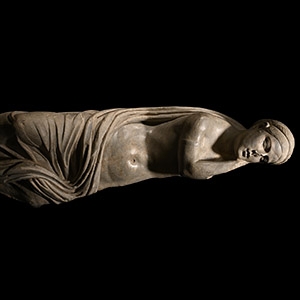
.jpg)
.jpg)


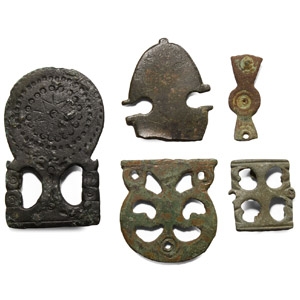
.jpg)
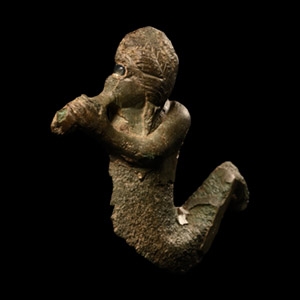
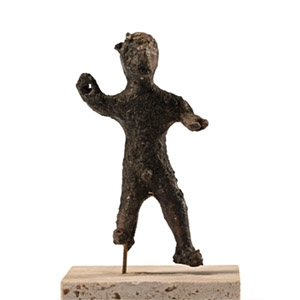
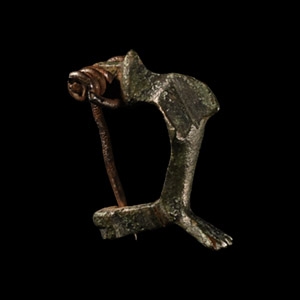
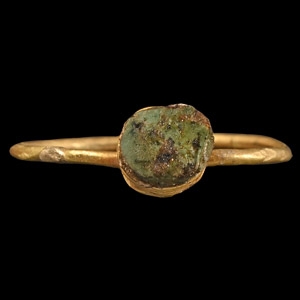

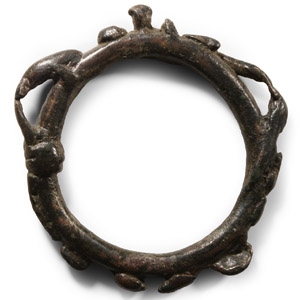
.jpg)
.jpg)
